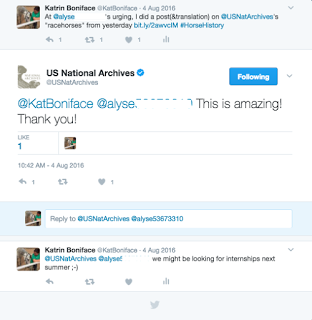Yesterday, this came across my feed:
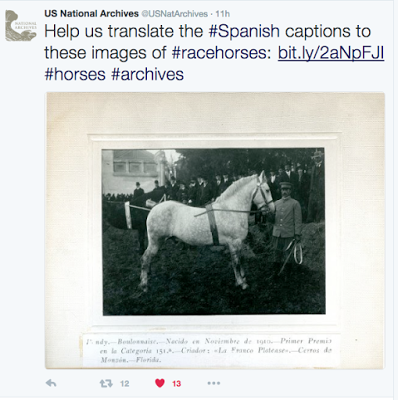
My first thought was “racehorses?…maybe harness racing?” My puzzlement only grew when I went to the full post which covered the five digitized photos from the U.S. National Archives collection RG 17-HD “Photographs of Horses and Dogs, 1897 – 1934.” The horses picture were certainly not racehorses, and while of different breeds all appeared to be fitted for a halter (conformation) competition. The tweeter, and blogpost writer, do not appear to be the source of the error, as the original items are listed in the archives as “Photograph of a Race Horse” or “Photograph of a Race Horse with Handler.” It is possibly that the original archivist, unfamiliar with specialized equine language, saw “Raza” –Race– at the beginning of each caption and assumed it meant “racehorse.” In English, we talk about “races” of people, but not of horses. However, in Spanish, French, and other related languages “raza” is also used for breeds of animals, which is how it is employed on these photographs. So, here is my “crack” at translating them, and what I do with that information:
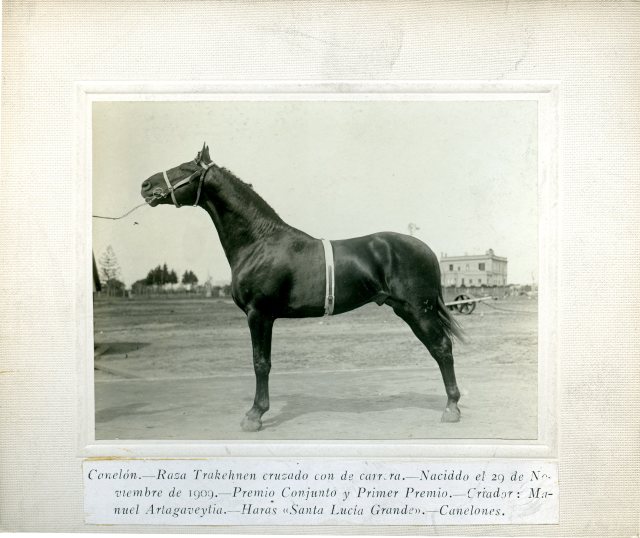
Canelón. – Raza Trakehnen cruzado con de carrera. – Nacido el 29 de Noviembre de 1909. – Premio Conjunto y Primer Premio. – Criador: Manuel Artagaveytia. – Haras ((Santa Lucia Grande)). – Canelones.
Horse’s name is Canelón. His breed is Trakehner “crossed with the runner” (possibly Thoroughbred? theres the racehorse). Born Nov. 29 1909. Joint prize & first prize: “premio conjunto” was puzzling, but looking at some modern Criollo (Uruguayan breed– why Criollo will become clear), it seems that conjunto is the championship class, and not a tie or a group entry as I had initially though. His breeder was Manuel Artagaveytia of the Santa Lucia Grande studfarm. He was from Canelones, a coastal area of Urugauy.
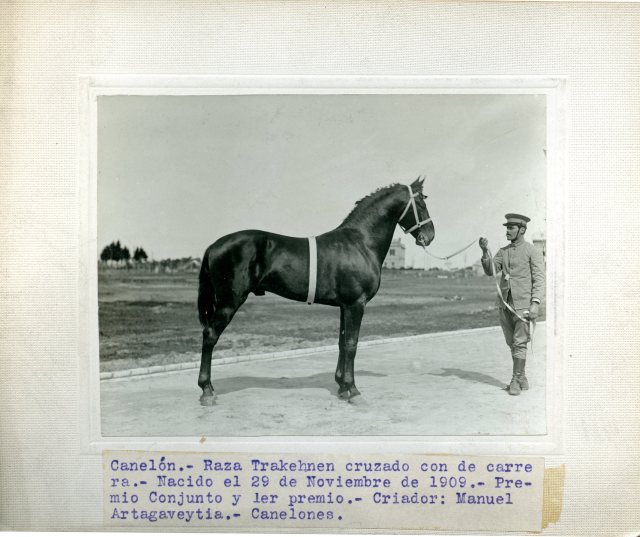
Original Caption: Canelón. – Raza Trakehnen cruzado con de carrera. – Nacido el 29 de Noviembre de 1909. – Premio Conjunto y ler premio. – Criador: Manuel Artagaveytia. – Canelones.
This is the same horse from the other side. The differences are “ler premio” (the prize) instead of primer premio, and the farm name is left off. His handler is also visible in a uniform that matches that used by the Urugauyan military in the early twentieth century. Men often did, and occasionally still do (and now women, too!) show horses in military uniform even at civilian shows, though this could indicate a military inspection.
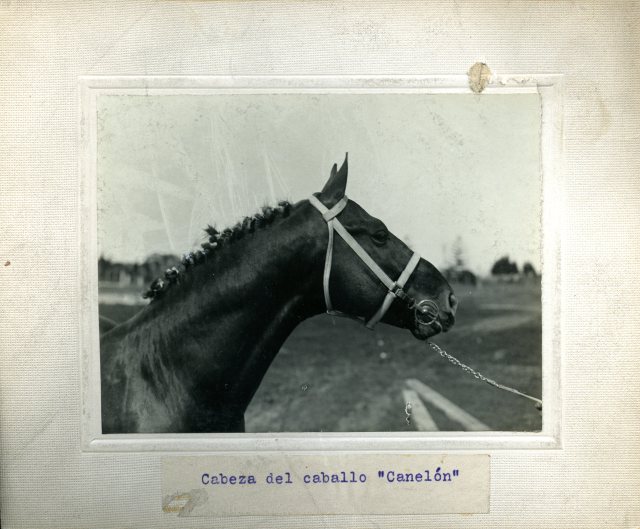
Head shot of the horse above. The only head shot that was digitized, the only one archived, or the only one taken? If it was the only one taken, what made Canelón special? Was he actually named after where he was born (this may seem careless, but is often an honor: making the horse representative)?

Roy Mischeif. – Raza Yorkshire cruzado con trakehnen. – Nacido el 20 de Octubre de 1909. – Premio Conjunto y Primer Premio. – Criador: Manuel Artagaveytia. – Haras ((Santa Lucia Grande)). – Canelones.
This horse is named Roy Mischeif. He is a Yorkshire (coaching relative of the Cleveland Bay) Trakehner cross. Born Oct. 20 1909. He was also awarded “premio conjunto” (championship) and first place. It is possible that this means these two horses competed in separate classes (possibly one for Trakehner crosses, and one for Yorkshire crosses, which could be a reason for the how the breeds in the cross are ordered, as they are of the same age); however, it is also possible that “first prize” means of a certain quality rather then best of the bunch. This is often done with warmblood inspections, with “first premium” still used in English. His breeder is the same as the horse above, and indeed his uniformed handler is likely the same man (possibly Manuel Artagaveytia himself).
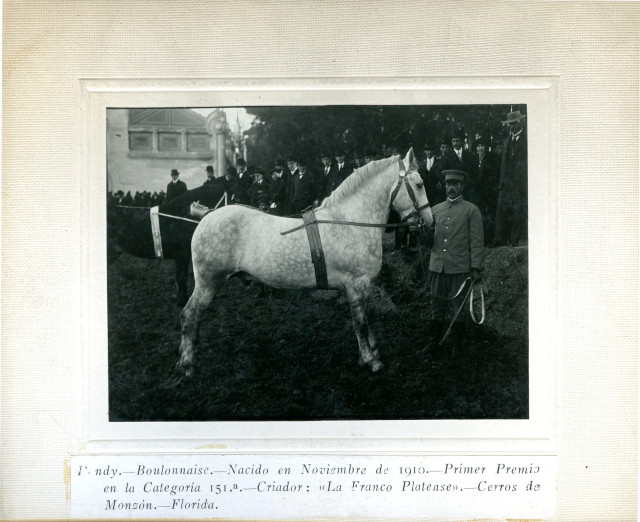
Pandy?- Boulonnaise. – Nacido en Noviembre de 1910. – Primer Premio en la Categoria 151.a. – Criador: ((La Franco Platense)). – Cerros de Monzon. – Florida.
This horse’s name is worn away, –ndy. He is a Boulonnaise, a French draft breed. Born Nov. 10 1910. First prize in the category 151.a. His show division being named may be incidental, or many mean signify he showed in a non-standard section while the others above were in the main category. An individual breeder is not listed, just a farm; La Franco Platense, in Cerros de Monzon, Florida (Uruguay). His handler looks to be the same mustachioed man above. It may be that these photos are meant to be stud ads, or simply one man’s record of how his stock performed at a show or inspection.
Given the breeds represented: the Boulonnaise, a French draft breed, the Trakehner, a Prussian breed that was and still is popular in France, and the Yorkshire, a British coaching breed that was popular in France, I immediately looked for (and found) connections between Urugauy and France at this time. The best avenue for further research would be Manuel Artagaveytia of Santa Lucia Grande Haras, in Canelones Uruguay. The pictures are likely from around 1912 (that Boulonnaise looks a little young, but certainly not a foal) but could be as late as the 1920’s.
Information often gets lost in translation from one language to another. Just as fraught is the translation from one way of life to another. I find that many of the translations I work with require not only someone proficient in the tongue, but someone proficient in the culture.
